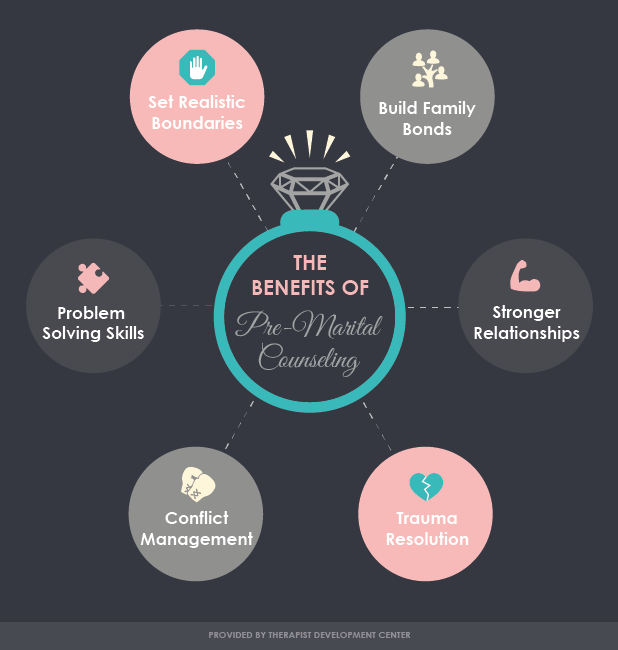Some Ideas on Aim Point Counseling You Need To Know
Table of ContentsAim Point Counseling Can Be Fun For EveryoneAn Unbiased View of Aim Point Counseling3 Easy Facts About Aim Point Counseling ExplainedThe Single Strategy To Use For Aim Point CounselingThe Aim Point Counseling PDFsSome Ideas on Aim Point Counseling You Should Know
The longitudinal style includes a pre-treatment study and two follow-up surveys at 3- and 12-months post-intervention. The study is embeded in 8 Relationships Australia Victoria centres, throughout municipal, external suburbs, and regional/rural websites. Relationships Australia, a non-government organisation, is the biggest supplier of couple counselling and connection services in Australia.
These high prices of partnership break down have been regularly connected with adverse health consequences for both adults and children adhering to divorce/separation.
Aim Point Counseling for Beginners
Longitudinal researches likewise suggest that children of divorce have a higher occurrence of emotional conditions, alcohol and drug usage, and dangerous sexual practices [7] The results of separation and splitting up can be harmful, study shows that high connection discord in undamaged pairs is likewise likely to have adverse results.
Factors that influence the end results of these services need extensive examination. Study to date has recognized both pair and individual elements that might add to partnership disharmony. These consist of connection complete satisfaction and commitment at the couple degree, and clinical depression at the specific degree. Robust research to evaluate relationship-enhancing treatments in the area are limited.
Aim Point Counseling Things To Know Before You Buy
While a lot of studies show renovations in connection complete satisfaction adhering to couple therapy, they are restricted by the examples and procedures used, mostly temporary follow-up time frames, and evaluations that do not account for the dyadic nature of pair information., is another commonly examined relationship result.
To sum up, research shows that couple-specific variables in addition to individual aspects might anticipate the results of pair counselling and connection solutions. The causal instructions of these relationships, however, is less clear. These observations are very important, because, to warrant and guide the application of partnership solutions such as pair counselling, empirical proof needs to discover both the end results of connection solutions and the variables that forecast effective therapy.
There is an expanding agreement that effectiveness studies ought to be enhanced by effectiveness study to best educate professional practice [ 29] The minimal effectiveness study that exists to date recommends that couple therapy can improve end results such as relationship contentment [33,43], interaction skills and general health [44], at the very least in some European nations.

We currently understand little about the profiles of couples that look for out connection education and learning contrasted with those who seek connection therapy, or the results of these programs. Unscientific proof recommends that there may be considerable distress among at least some pairs seeking connection education and learning.
Not known Facts About Aim Point Counseling
Responses includes participants completing questionnaires about their partnership (e.g. actions of interpersonal problems), and obtaining info on what their ratings indicate. Cognitive-behavioural techniques promote transforming cognitions to assist in favorable connections. These might include advertising reasonable attributions/expectations around negative partner behaviour [46] In skills training, pairs attend lectures or discussions on connection abilities, and practise these throughout facilitator-led tasks [ 45]
These impacts have actually persisted for as much as 4 click to find out more years in some research studies [47] These meta-analyses highlight limitations in the existing literary works on relationship education and learning. Particularly, most of research studies entailed pairs from top socio-economic backgrounds that were not experiencing high relationship discord [47,48] This sample account may not represent clients who commonly provide for relationship education and learning.
10 Simple Techniques For Aim Point Counseling

Very little research study has taken a look at the comparative advantages of pair counselling and partnership education and learning programs. As customers are most likely to self-select into these solution types, it is not clear whether particular partnership distress accounts present per solution kind, or indeed whether there is an interaction in between providing account, service type and result.
(https://myspace.com/a1mpoint)
Thus, we have actually included a 12-month follow-up to assess longer-term trends and results.
Therefore, we recommend to utilise multi-level analytical modelling procedures that control for the inter-dependence of couple information to evaluate any therapy effects. The particular purposes of the ECC study are to: 1. Map accounts of customers seeking neighborhood agency-based pair counselling vs. connection improvement programs in terms of socio-demographic and partnership indicators (such as connection satisfaction, connection dedication, social problems, and reasons for participating in), in addition to health and wellness (such as anxiety, basic wellness) and health solution use (eg.
2. Identify whether pair counselling and partnership education and learning solutions enhance 3- and twelve-month results for partnership contentment, dedication, and clinical depression, using analytical evaluations ideal to pair information. 3. Identify the loved one payments of client aspects (individual and pair) and therapy/education factors to results at 3- and 12-months, and to sustainability of end results with time.
An Unbiased View of Aim Point Counseling
Multi-level modelling to identify pre-post differences, controlling for dyadic (pair) degree. To contribute to the literature analyzing the efficiency of community-based pair therapy. The outcomes will aid clinical decision-making in community-based connection service settings, and specialist training. 3. To identify the loved one contributions of client/couple and treatment elements to end results at 3- and 12-months, and to sustainability of results over time.